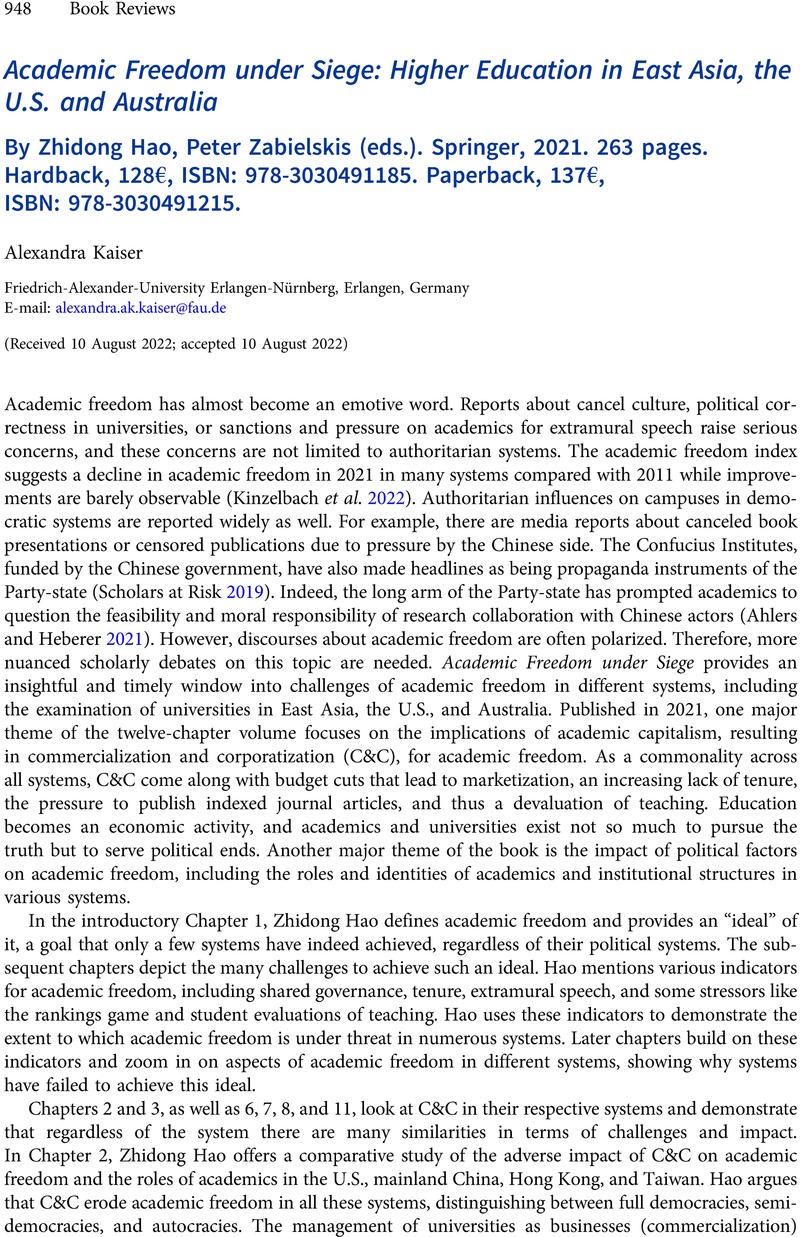No CrossRef data available.
Article contents
Academic Freedom under Siege: Higher Education in East Asia, the U.S. and Australia By Zhidong Hao, Peter Zabielskis (eds.). Springer, 2021. 263 pages. Hardback, 128€, ISBN: 978-3030491185. Paperback, 137€, ISBN: 978-3030491215.
Review products
Academic Freedom under Siege: Higher Education in East Asia, the U.S. and Australia By Zhidong Hao, Peter Zabielskis (eds.). Springer, 2021. 263 pages. Hardback, 128€, ISBN: 978-3030491185. Paperback, 137€, ISBN: 978-3030491215.
Published online by Cambridge University Press: 21 November 2022
Abstract
An abstract is not available for this content so a preview has been provided. Please use the Get access link above for information on how to access this content.

- Type
- Book Review
- Information
- Copyright
- Copyright © The Author(s), 2022. Published by Cambridge University Press
References
Ahlers, Anna L. and Heberer, Thomas. “Kooperation auf Augenhöhe.” Forschung und Lehre, 20 August 2021. https://www.forschung-und-lehre.de/politik/kooperation-auf-augenhoehe-4031.CrossRefGoogle Scholar
Kinzelbach, Katrin, Lingberg, Staffan I., Pelke, Lars and Spannagel, Janika (2022). “Academic Freedom Index – 2022 Update.” Friedrich Alexander-Universität Erlangen-Nürnberg. https://opus4.kobv.de/opus4-fau/frontdoor/index/index/docId/18612.Google Scholar
Malik, Kenan. “If Education is All about Getting a Job, the Humanities are Left Just to the Rich.” 21 July 2022, https://www.theguardian.com/commentisfree/2022/jul/31/education-frees-working-class-not-getting-better-job.Google Scholar
Perry, Elizabeth J. (2020). “Educated Acquiescence: How Academia Sustains Authoritarianism in China.” Theory and Society 49, pp. 1–22.CrossRefGoogle Scholar
Scholars at Risk (2019). “Obstacles to Excellence: Academic Freedom & China's Quest for World Class Universities.” https://www.scholarsatrisk.org/resources/obstacles-to-excellence-academic-freedom-chinas-quest-for-world-class-universities/.Google Scholar



